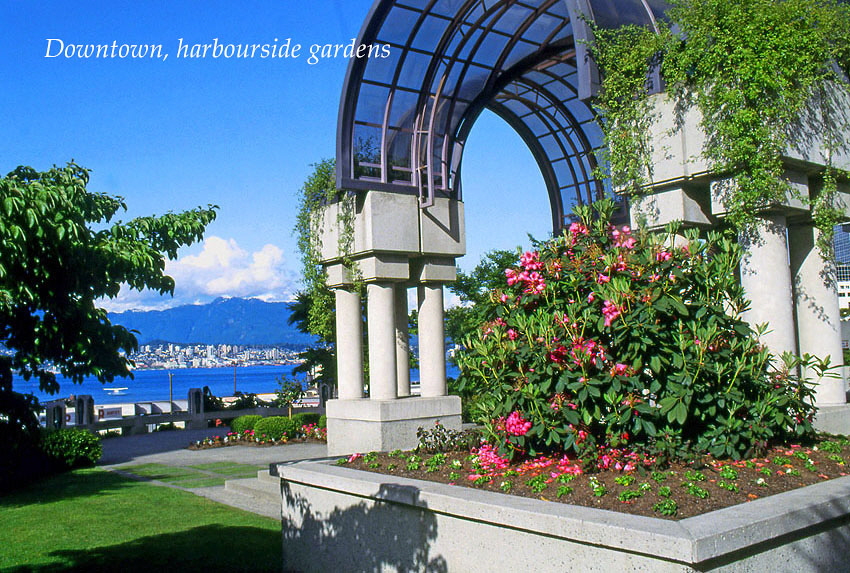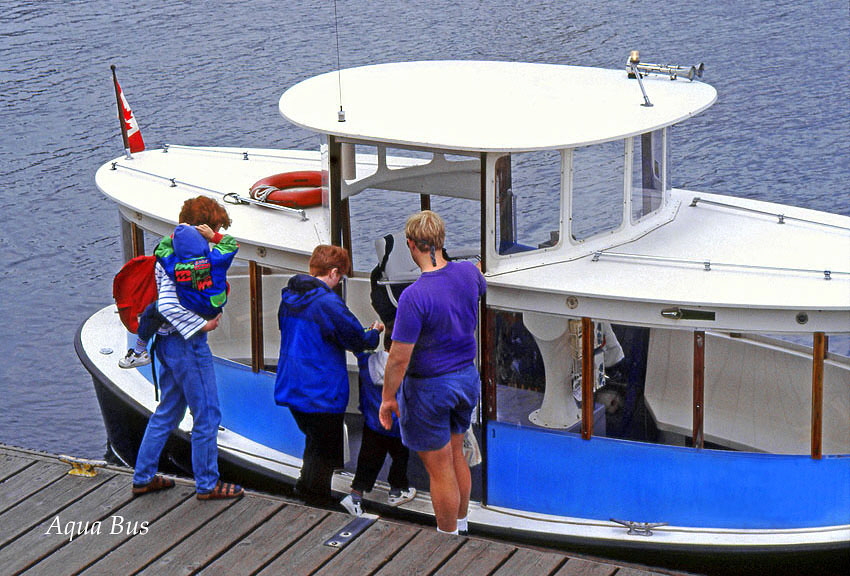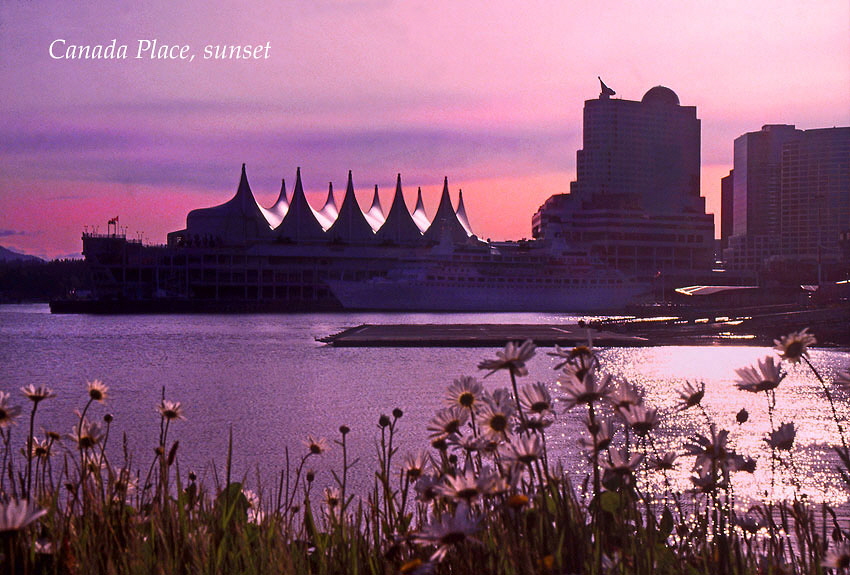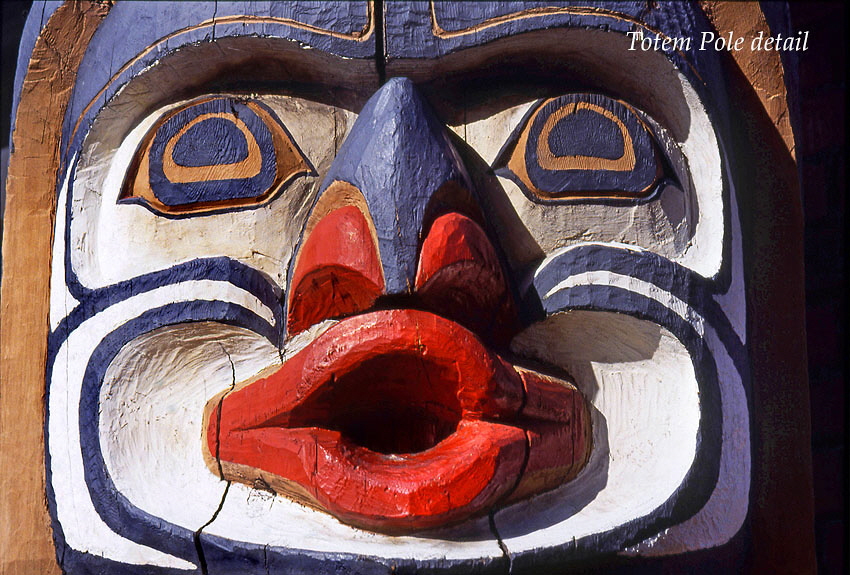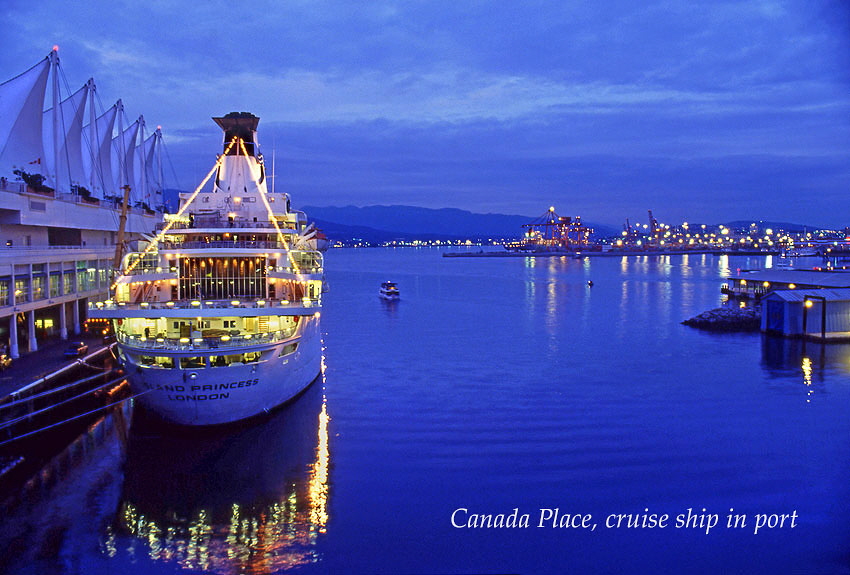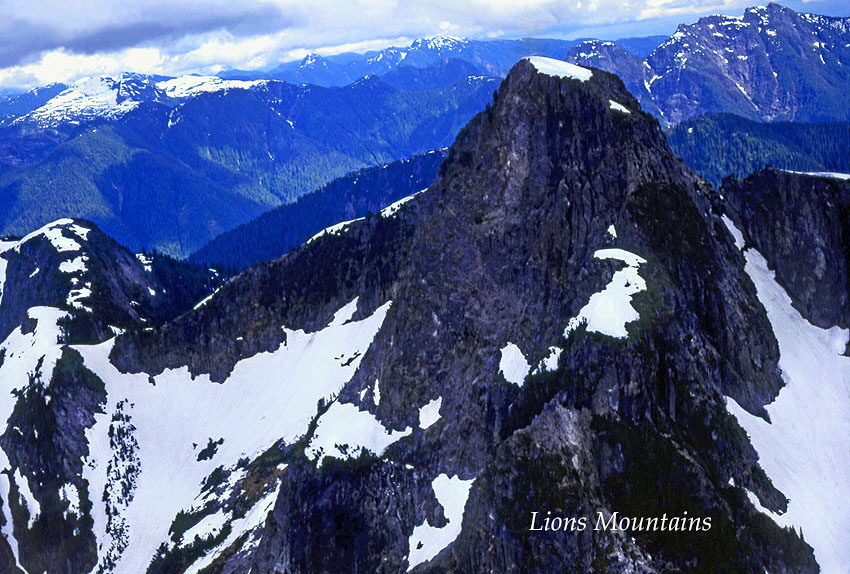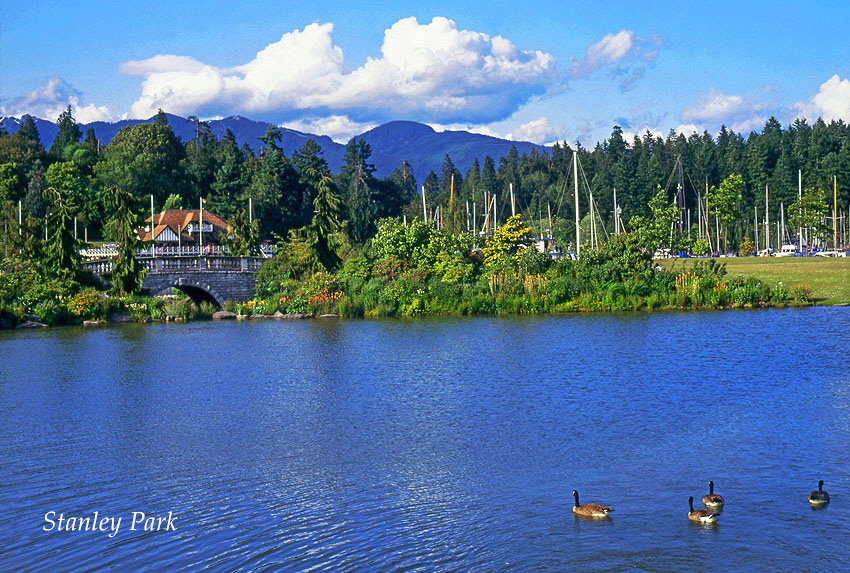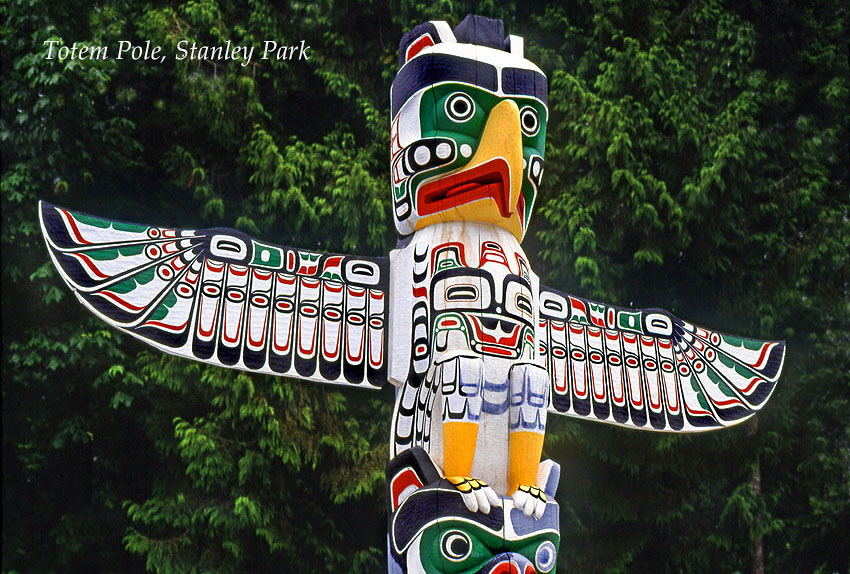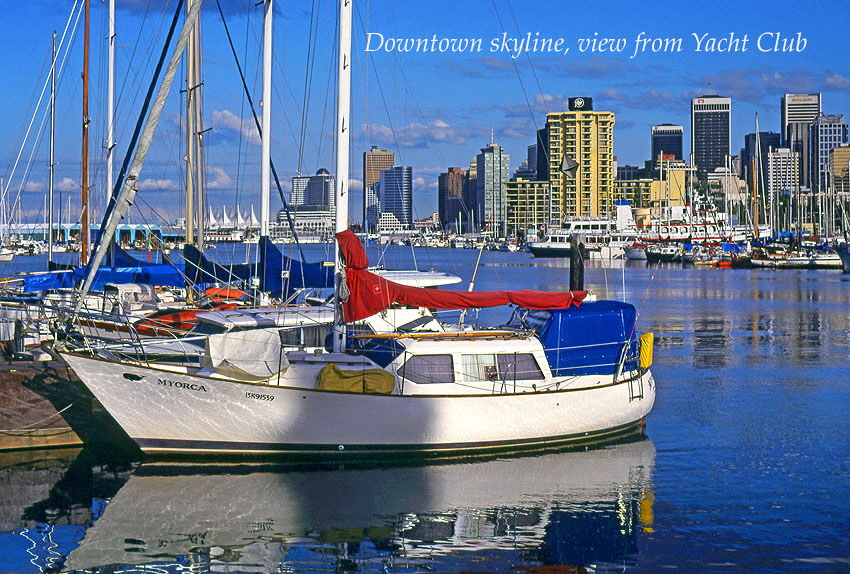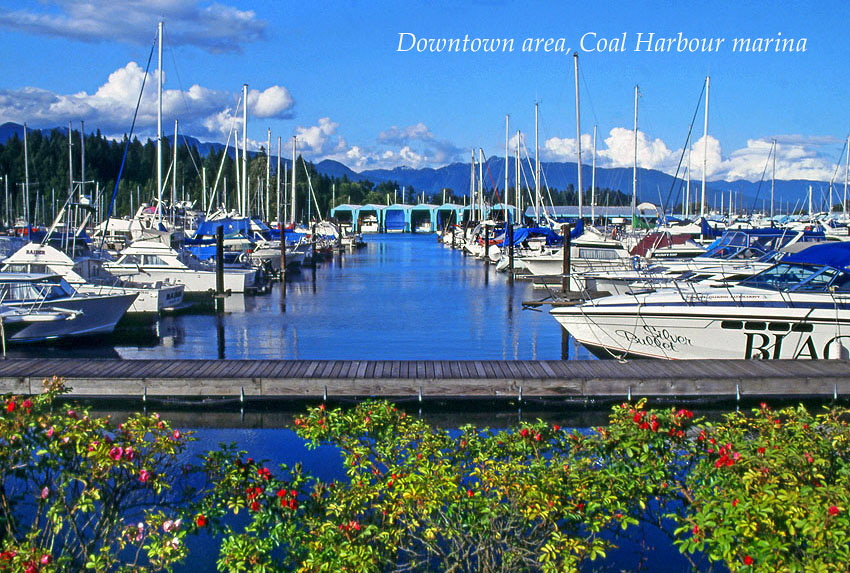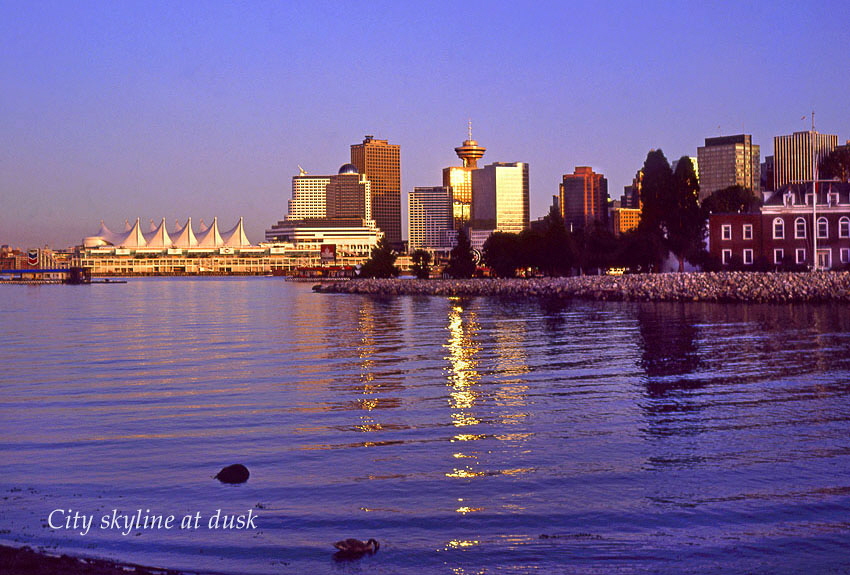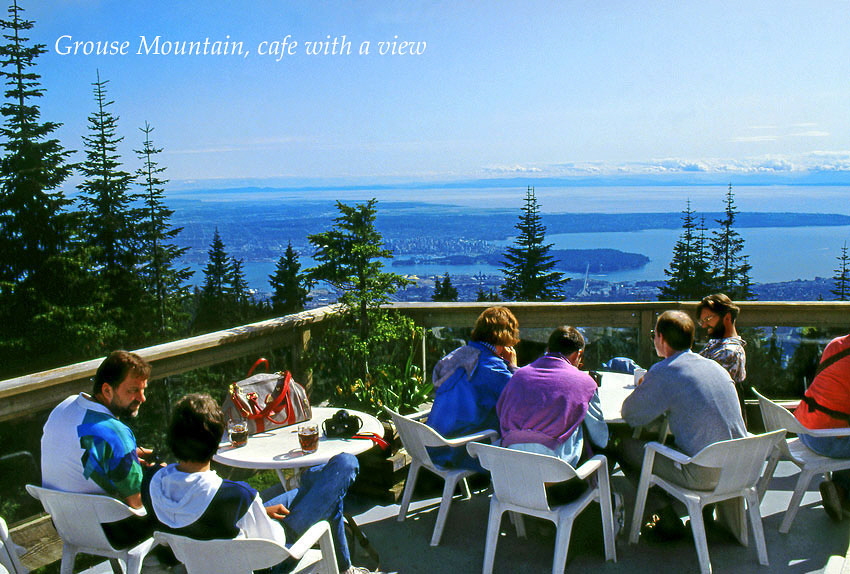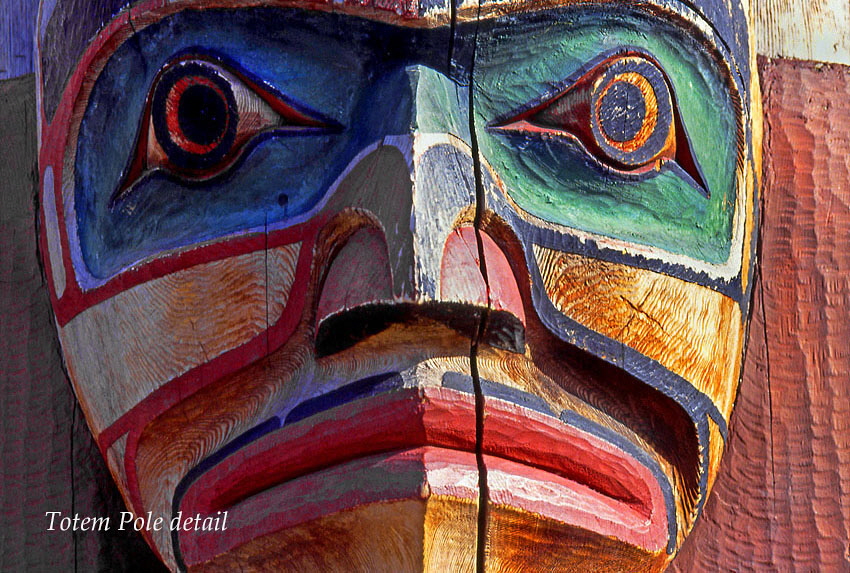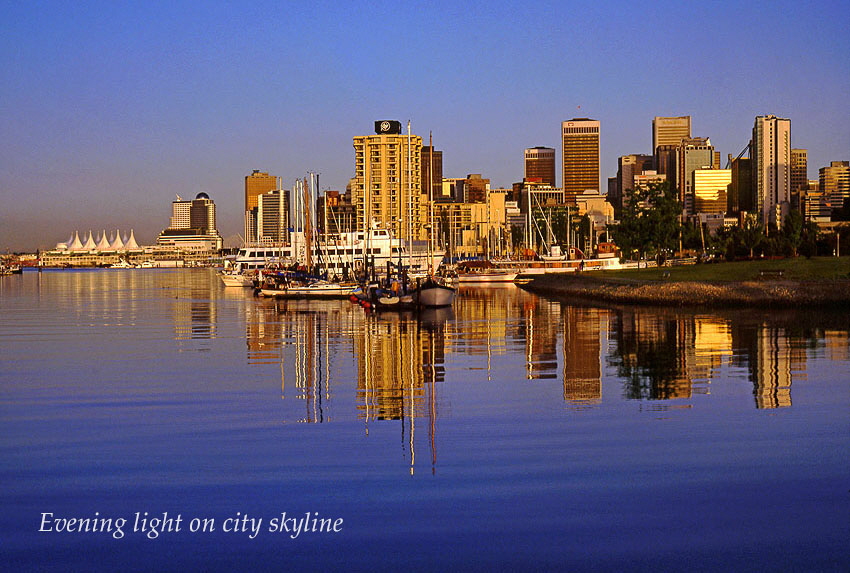
Vancouver has made a determined attempt to stay as close as possible to nature:
its architects are required wherever possible,
to give residence a view of the ocean or mountains, or preferably both!

On my first full day in Vancouver, I was lucky to join one of the last tours on the famous Royal Hudson 2860 steam train, before it was taken off for restoration. Joining my fellow travellers for the run from North Vancouver to the hillside town of Squamish, I found myself caught up in the general air of anticipation, which pervaded not just the crew and passengers but also the gaggle of locals who had turned up to see us on our way.
The engine, dating from 1930, and the 1940’s passenger coaches gleamed from hours of loving attention. After numerous photo calls, the guard blew his whistle, the driver let out a triumphant puff of smoke and we were off, past rivers and waterfalls, onwards and upward through six tunnels, hugging the coastline all the way. Arriving at Squamish too was a small crowd of onlookers and the Royal Canadian Mounted Police in their bright red coats and Stetsons, getting attention from those with their cameras and phones.
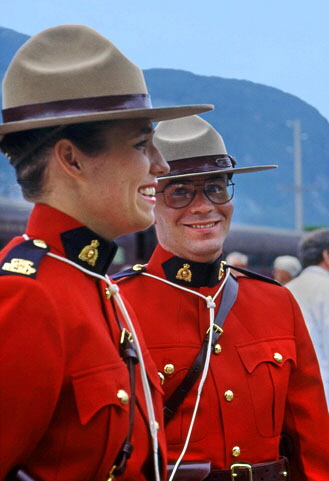
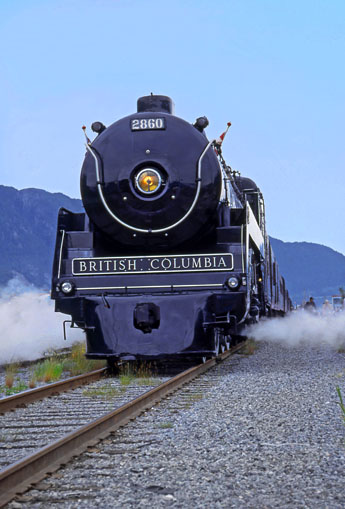
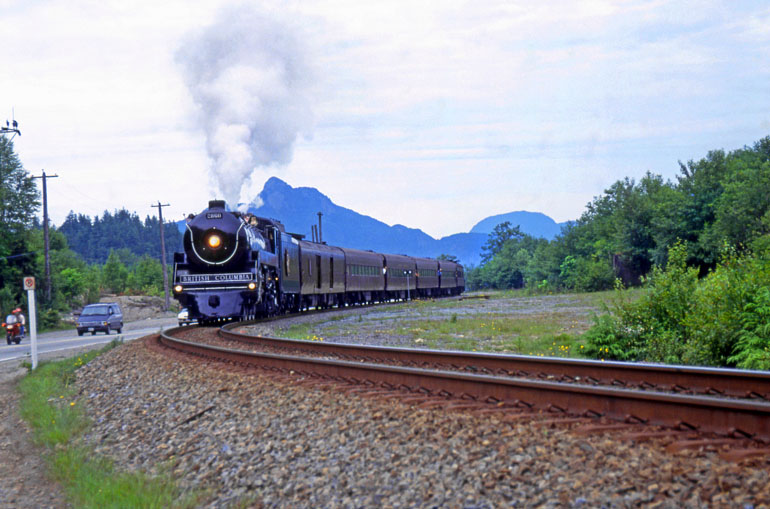
About a 150 years ago, this whole area was covered in dense forest and the only inhabitants were tribal Indians eking out a traditional living through hunting and fishing. A century and a half later plenty has changed, but Vancouver still maintains a sense of being a city on the edge of the wild. And there’s no more way to experience it than chugging through the countryside caught between ocean and mountain.
“Take a look around you” enthused Jerry, a 50-year-old photographer, originally from Sussex, England. “It’s all virgin countryside - one of the world’s last remaining. In this city you can drive for an hour in any direction, and you’ll be in the middle of nowhere”.
That Vancouver is on the brink of nature, a sophisticated civilisation surrounded by wilderness is what brought many of its resident there in the first place and like Jerry, they’re fiercely protective of it. “We’re a grown up city now and we don’t want to
grow up any more”.
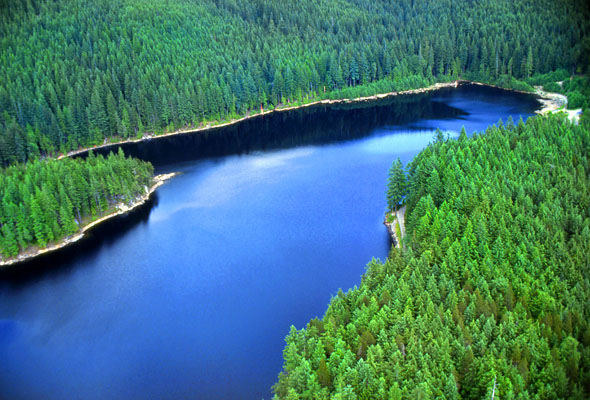
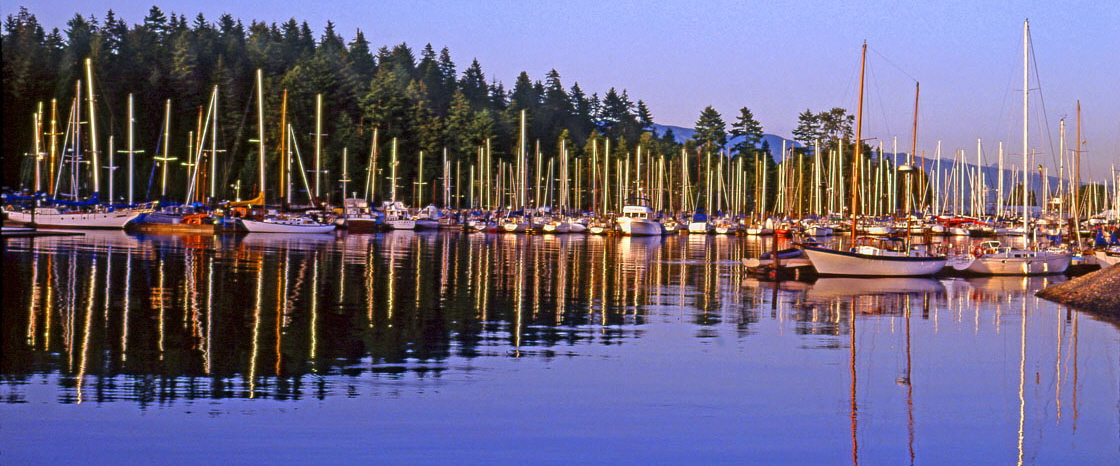
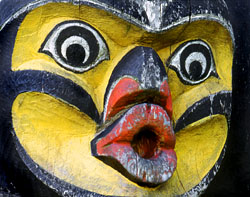
Successfully walking the tightrope between providing all the requirements of modern city life, while at the same time responding to the need to conserve Vancouver’s natural heritage isn’t easy. But it’s something that the city planners have learned to live with. Elvira, a native Vancouverite, who has lived all her life in the city, looks back. “In 1959, when I was five, King George VI and Queen Elizabeth visited Canada. My parents took me to see them board the Royal Hudson. It was a great occasion. I’ve seen some changes since then”. She pointed to the three storey block in English Bay. “When we first lived here, there were very few buildings. We had the most wonderful scenery. Then they built those horrible apartments right opposite us and blocked our view of the bay. My family was furious”.
A harbour view, preferably in sight of the twin peaks of the Lions Mountains, is a luxury to which all residents aspire. Since Elvira’s childhood, there have been several public outcries from locals robbed of their view of newly completed buildings. Today, city architects are required, whenever possible, to give everyone a glimpse or the ocean or mountains or better still, both. As Elvira says: “sure, there’ll be more hotels and more development, but they’ve now learned that they can’t destroy our landscape. This land and its nature will always be with us”.
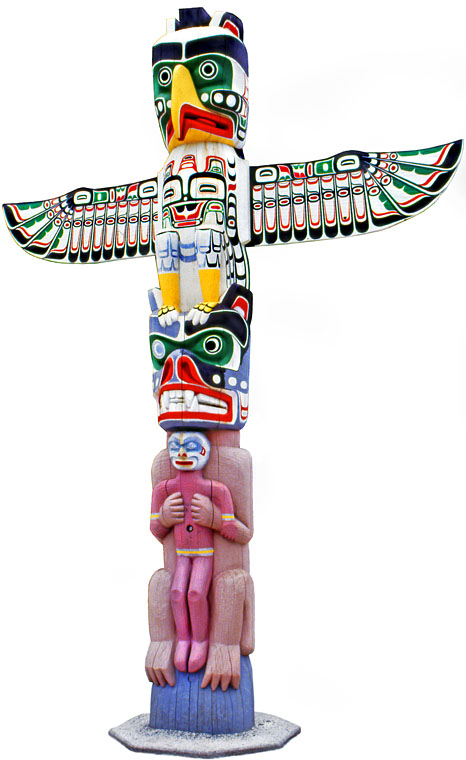
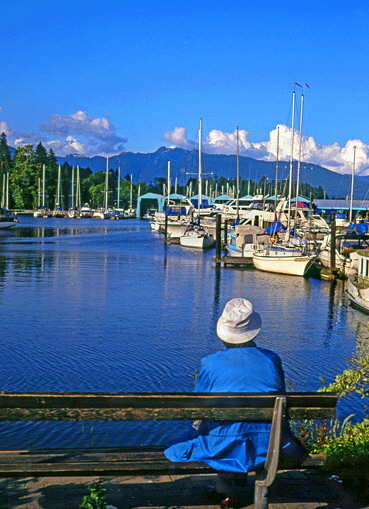
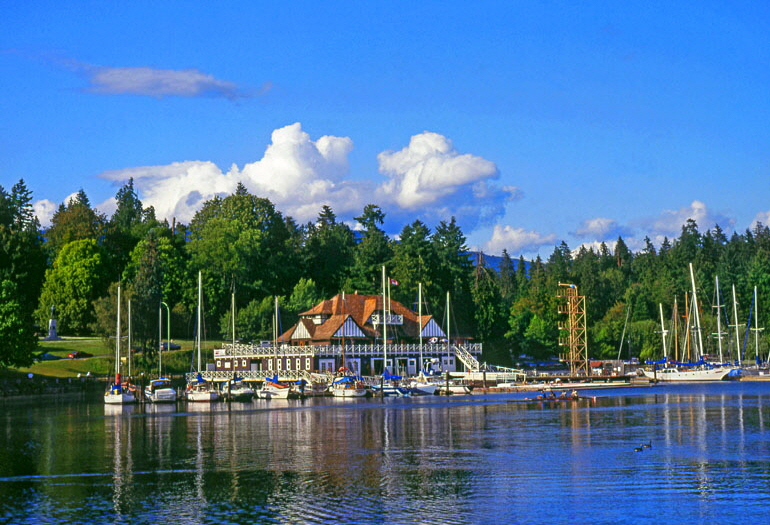
View from Downtown, and Yacht Club
In 1986, when the city hosted the ‘Expo’, the showpiece Canada Place was opened by the Prince and Princess of Wales. As with all new structures here, care was taken to ensure that it blended into its environment. The distinctive white building with its pointed roof, designed to resemble a ship in full sail, is now the disembarkation point for all visiting cruise ships, and quickly become Vancouver’s most recognisable symbol world-wide. Viewed from the sea, the city skyline, with its gleaming ‘sails’ particularly at night is spectacular.
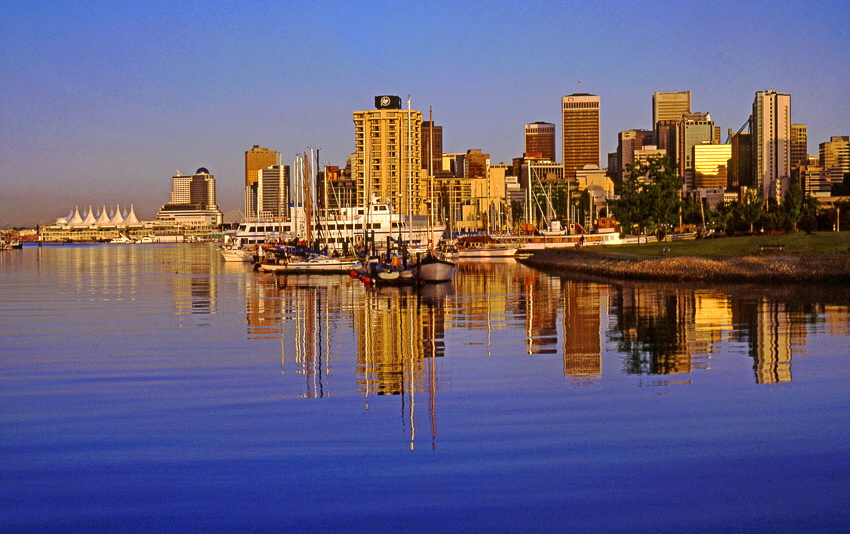
Evening light, Downtown
As waterfronts go, Vancouver is stunning. In the late afternoon, when the open air promenade of Canada Place is at its loveliest, strollers gather to view the harbour front activity at close quarters. As the warm evening light glistens on the milky white ‘sails’, I watch two cruise ships, poised like two arms on either side of the port, dislodge themselves and glide gently outwards Lions Gate Bridge. Far away, cargo-carriers were lining up, each paying $2000 a day (waiting time alone), ready to dock into North America’s second largest seaport. As the liners disappeared from sight, the harbour front action continued with a rush of seaplanes, water buses and helicopters arriving and departing at the quay side. And as it grew darker, a stream of yachts passed by, back from a day’s sail.
But the harbour doesn’t look just pretty, it’s clean too. If you’re lucky you can spot porpoises and seals from Stanley Park and if you go up to Lions Gate, you might even see a killer whale or two.
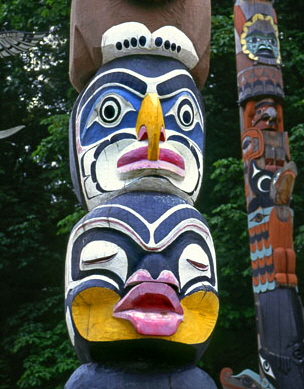
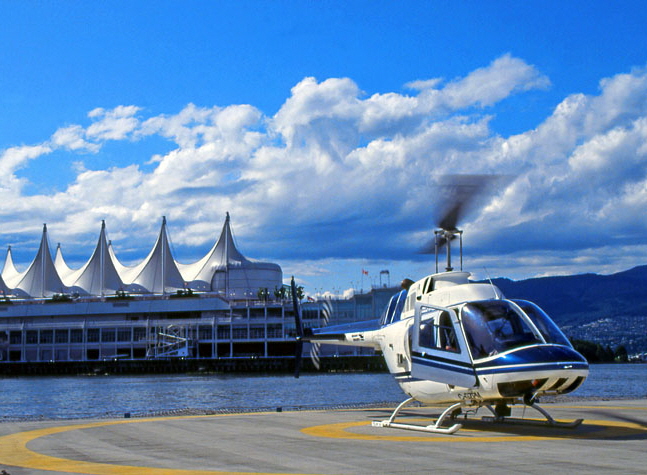
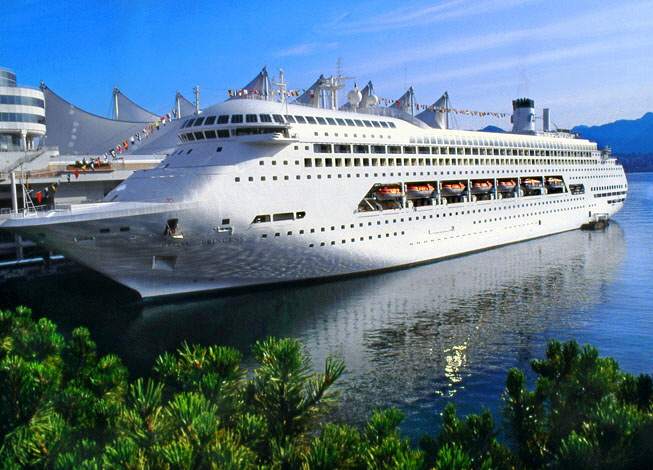
Canada Place, and heliport
Vancouver is a great 'outdoors' city. Just 20 minutes’ drive from the city boutiques and restaurants in the downtown Robson Square, the Capilano Suspension Bridge is a prime example of environment-friendly tourism. Built long before the era of conservation, the bridge, set 230 feet (70m) above the gorge of the Capilano River make a dramatic centrepiece to a national park which also has walking paths, nature trails, narrow wooden bridges over ponds, all amidst the gorgeous scenery and dense greenery.
Capilano Suspension Bridge
Capilano National Park
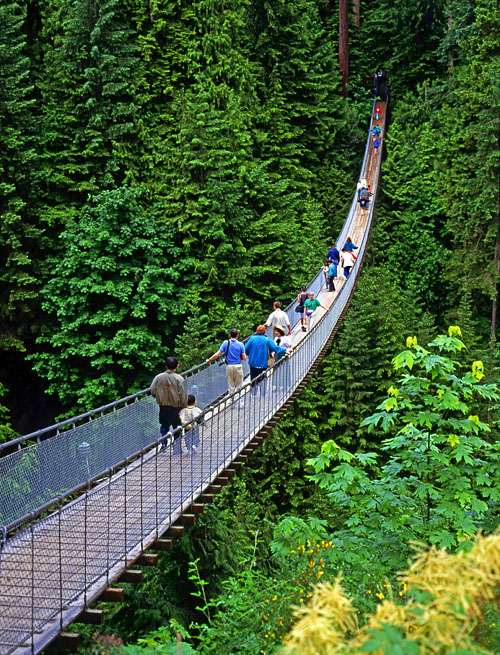

Nearby, the Skyride cable car whisked me on the one mile journey to the peak of Grouse Mountain, thereby providing another of the heart-in-stomach thrills Vancouver seems to specialise in. The view across the city and Pacific Ocean from the top of the mountain is impressive, helping to make this a popular summer picnic spot, which also doubles as a winter ski resort.
Capilano River
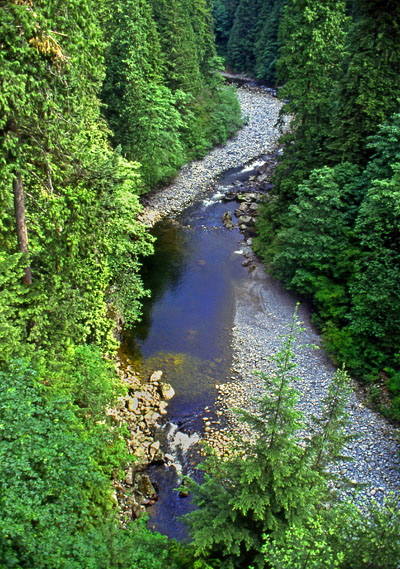
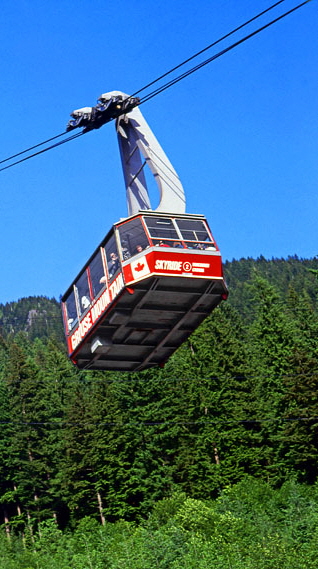

View from Grouse Mountain
View from Lonsdale Quay
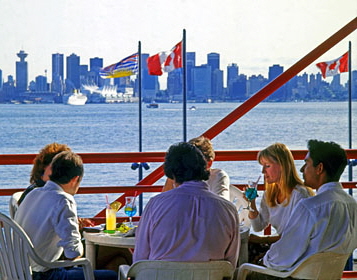
Back on even ground, the water buses (or aqua buses) at Lonsdale Quay work at full capacity during the evening rush-hour, taking office workers from downtown across to North Vancouver. The disembarking passengers don’t seem in a hurry to get home though, many preferring instead to linger in the waterfront cafes whilst enjoying a drink or ice cream sundae, some conversation and an uninterrupted view of the downtown skyline. For those wishing to stroll around the old parts of the city, Gastown is the place to be. It’s Vancouver’s oldest neighbourhood, which grew from a single tavern founded John ‘Gassy Jack’ Deighton in 1867. Today it’s a blend of old and new, with Victorian buildings and cobblestone streets, old lampposts, and the famous ‘Steam Clock’ amidst chic boutiques, restaurants and night life.
Even within the city bounds, nature is never far away. Look at a map and you’ll find almost half of it shaded green - much of which represent the 400 hectare (1000 acre) Stanley Park, the second largest urban park in the whole of North America. “Reminds me of New York’s Central Park”, I said to a jogger who paused for a chat. “Oh no, this is bigger, better and definitely safer”, he assured me. He advised me to spend time exploring Vancouver’s parks and not to rush around as most tourist do. “Take it slow, and you’ll enjoy it more”.
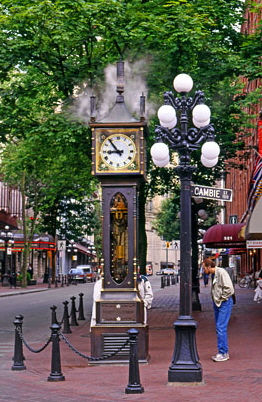
Gastown, Steam Clock
Stanley Park

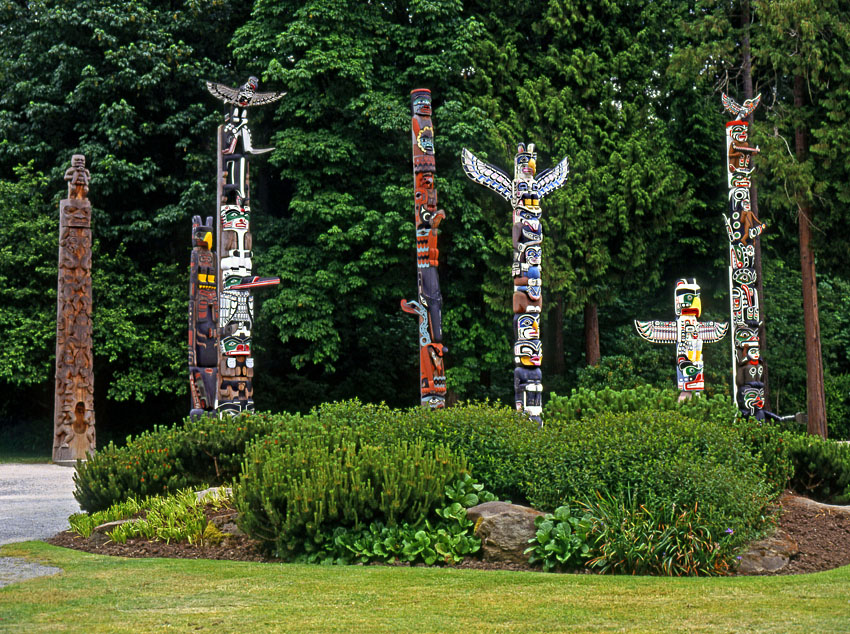
Stanley Park, Totem Poles
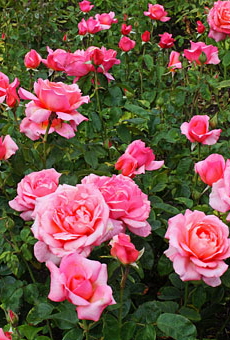
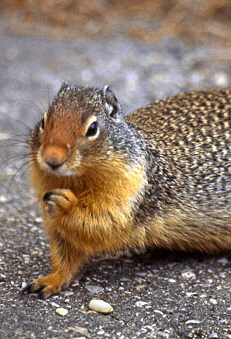

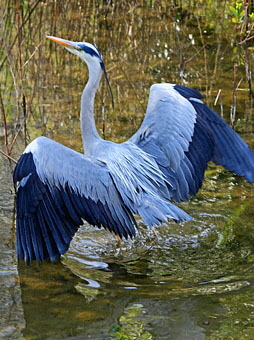

Stanley Park, flora and fauna
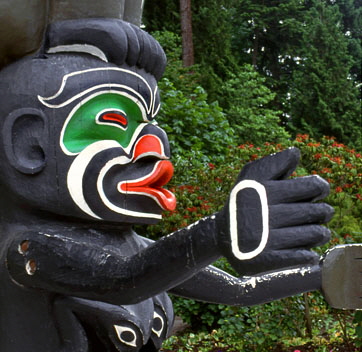
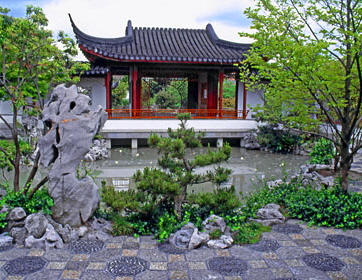
Dr Sun Yat-Sen’s Garden
He was right. Delightfully unpredictable, Stanley Park is a joy for visitors to discover and for locals to savour. It’s much more than a park, with 17 miles of forest trails, lake, its own towering Grand Fir and Red Cedar forest, it’s unlikely you’ll see everything in a day. For wildlife enthusiasts, you’re bound to spot ground squirrels, foxes, beavers, otters and birdlife amongst others. In addition, there are beaches, golf course, yacht club and numerous family activity areas. A display of totem poles reflects Vancouver’s Indian heritage and a huge rose garden sporting 3500 rose bushes.
Unlike Stanley Park, Dr Sun Yat-Sen’s Chinese Garden contains just one single yellow rose bush, immaculately kept, it’s the first full-scale classical garden to be constructed outside China. Plants have been chosen not only for their colour, size, shape and fragrance but also their acoustical qualities. The aim is to provide visitors with ‘refreshment for the heart’. Why the he solitary rose? “The Chinese say that one is enough - the beauty of one is more beautiful than the beauty of many”.
Elsewhere too there is a strong Chinese influence. Ethnically, the city’s population is now very diverse and almost half of the metropolitan area’s 1.5 million citizens are of non-British descent.
Any Brits who feel a little homesick don’t have to travel far because Victoria, British Columbia’s state capital on Vancouver Island makes a great day trip. And it’s as English as they come. Getting there by seaplane or helicopter takes just 40 minutes, or in under two hours by ferry, which I decided to take.
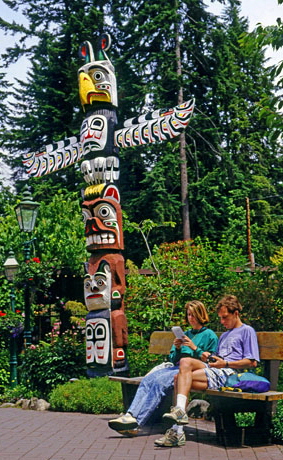
Vancouver Island
Vancouver Island, Empress Hotel
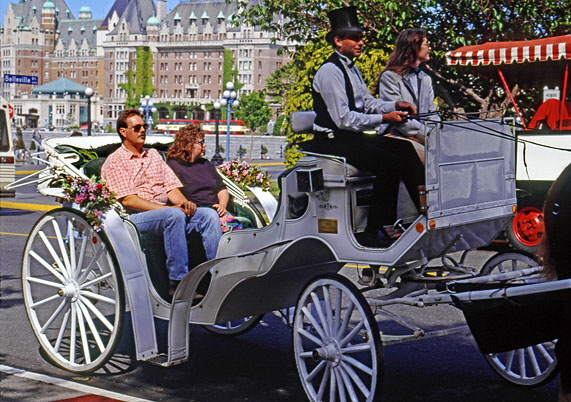
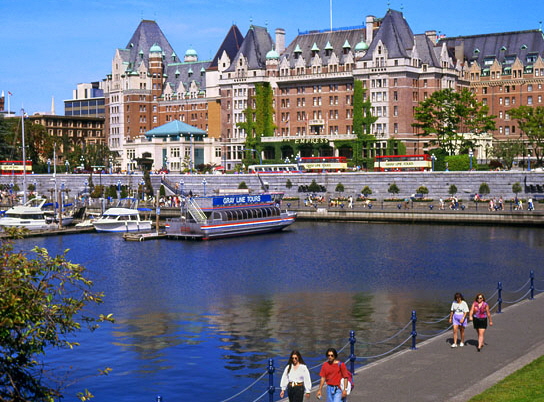
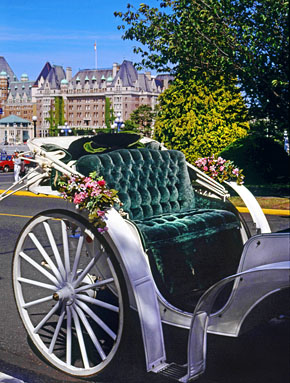
Stepping ashore is like going back in history as you are confronted grand Victorian buildings. Horse-drawn carriages parked by the harbourfront offer tours which can be pricy, but a comfortable way to see the city highlights. Or there’s the hop-on-and-off London double decker bus tour, waiting for the disembarking visitors.
While Vancouver prides itself on moving with the times, Victoria makes a positive asset out of staying in the past. Facing the harbour, the historic Fairmont Empress Hotel (opened in 1908) is the venue for afternoon tea, to be taken in the grand Tea Lobby in ‘colonial style’ setting. If time permits, a visit to the 55 acre Butchart Gardens ($30 entry) with rose, Italian and Japanese gardens is spectacular.
Afterwards, you can wander around the shops in Government Street, with their Harris tweeds and English woollens, and on a hot thirsty day, down a pint of draft at the Elephant & Castle pub. Touristy perhaps, drawing over 6 million visitors annually, but delightfully quaint, Victoria, like Vancouver and the Royal Hudson, has a style all of its own.
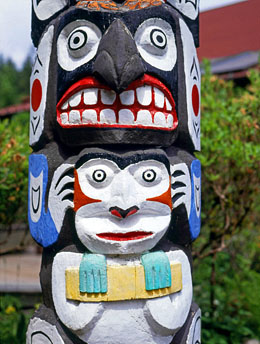
15 images here ©JAYTRAVELPHOTOS
© COPYRIGHT notice. The images on this site are for viewing only.
To purchase any, for personal or commercial use, please contact us at jaytravelphotos@aol.com

